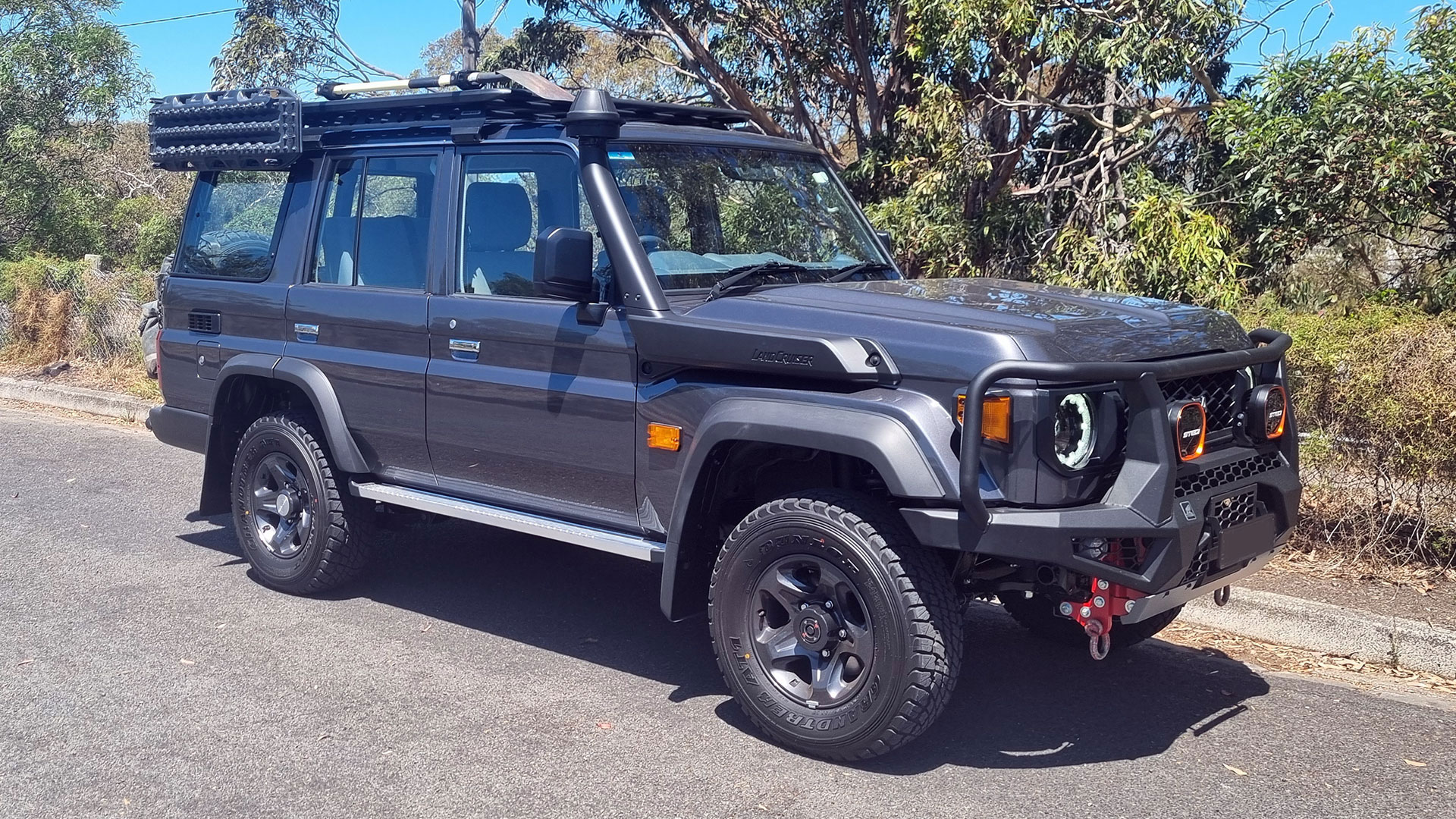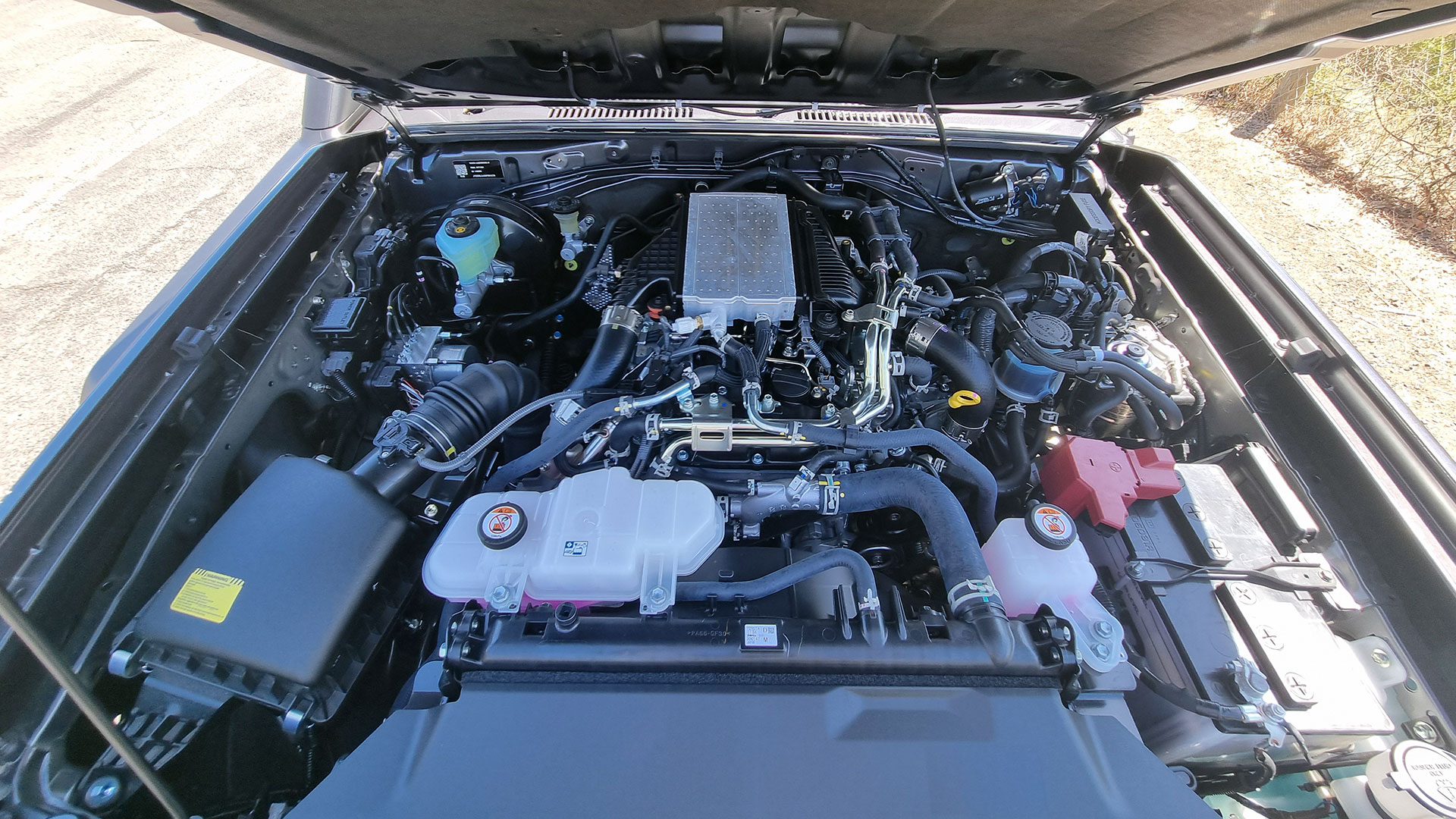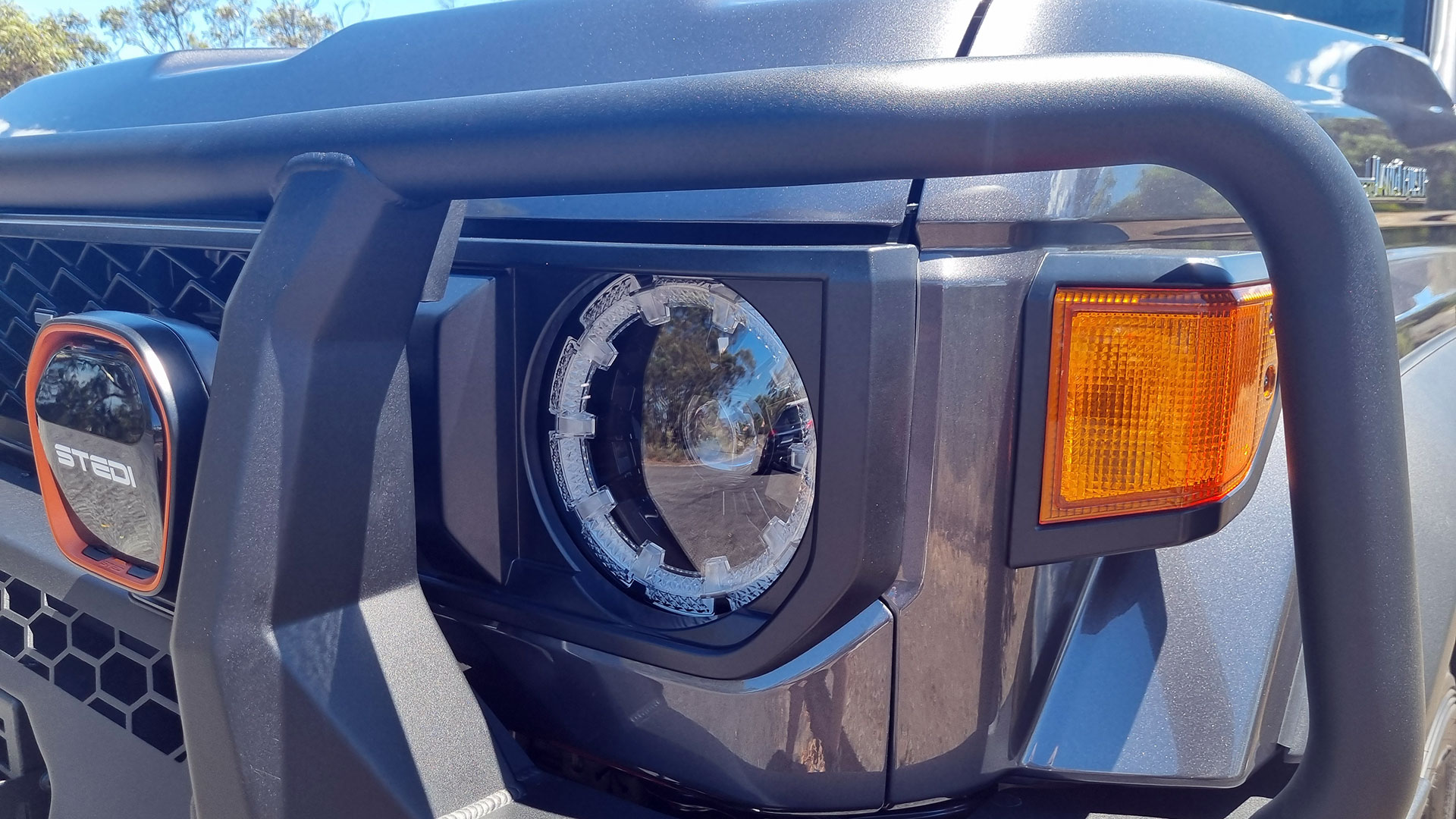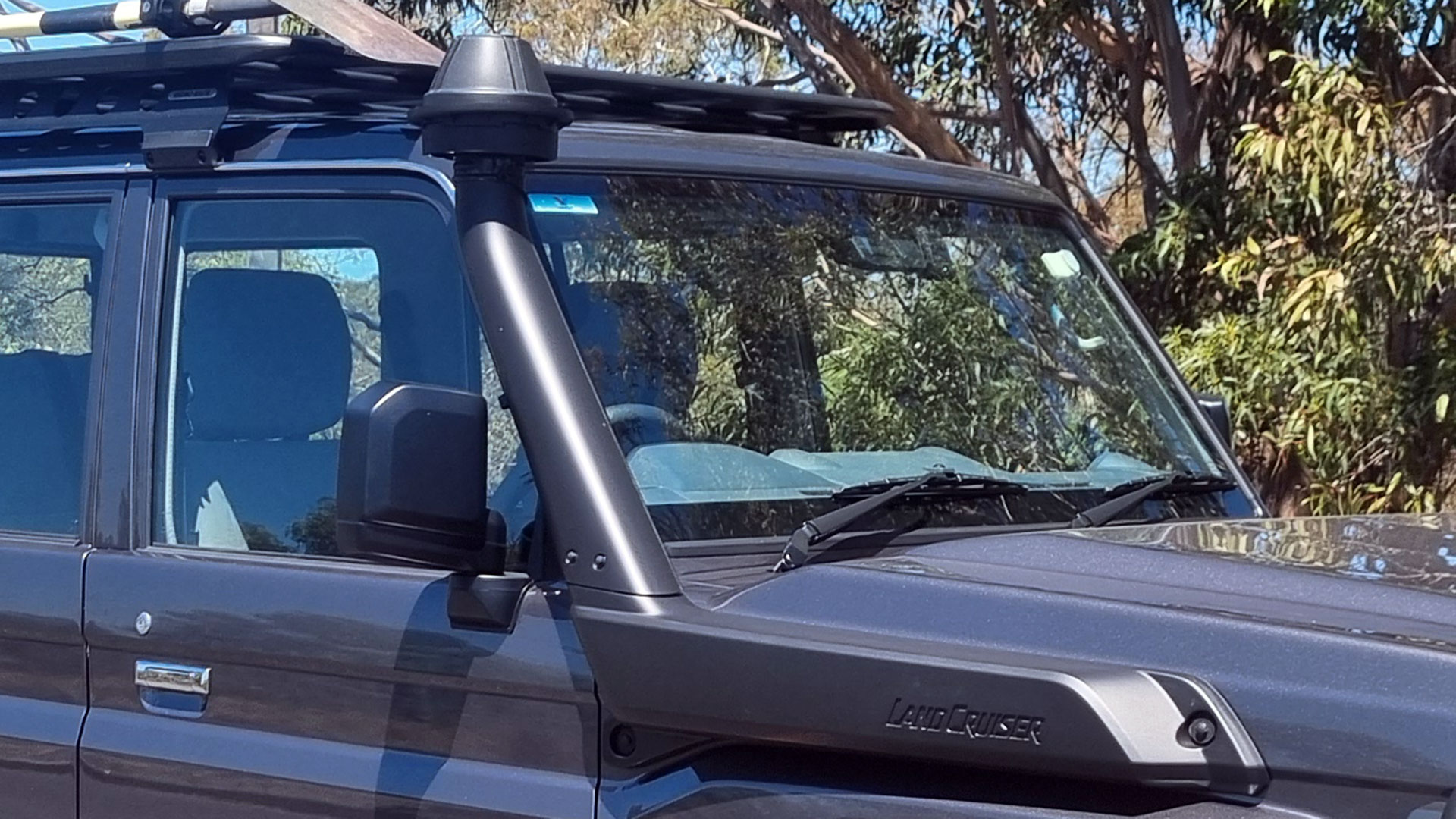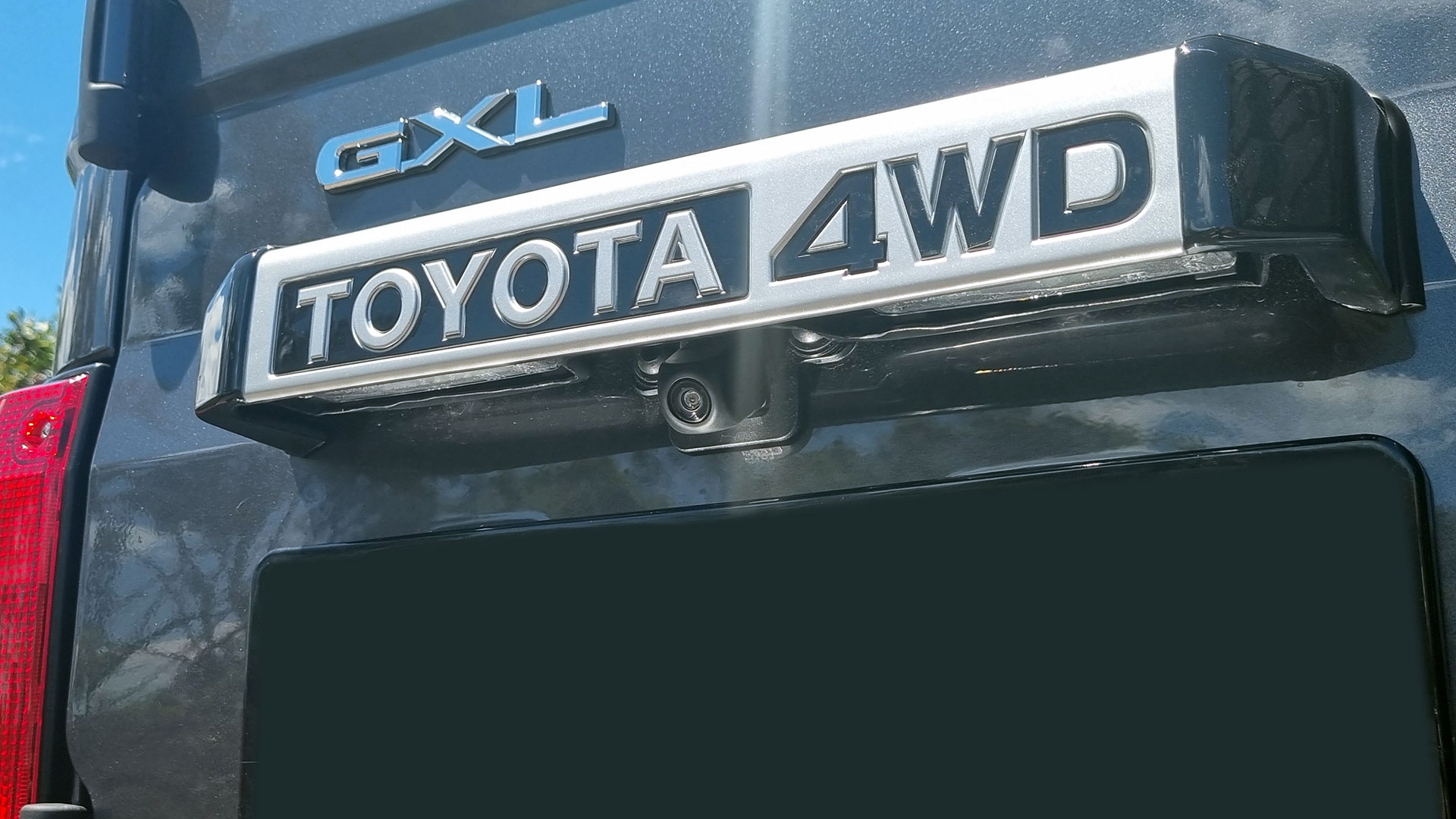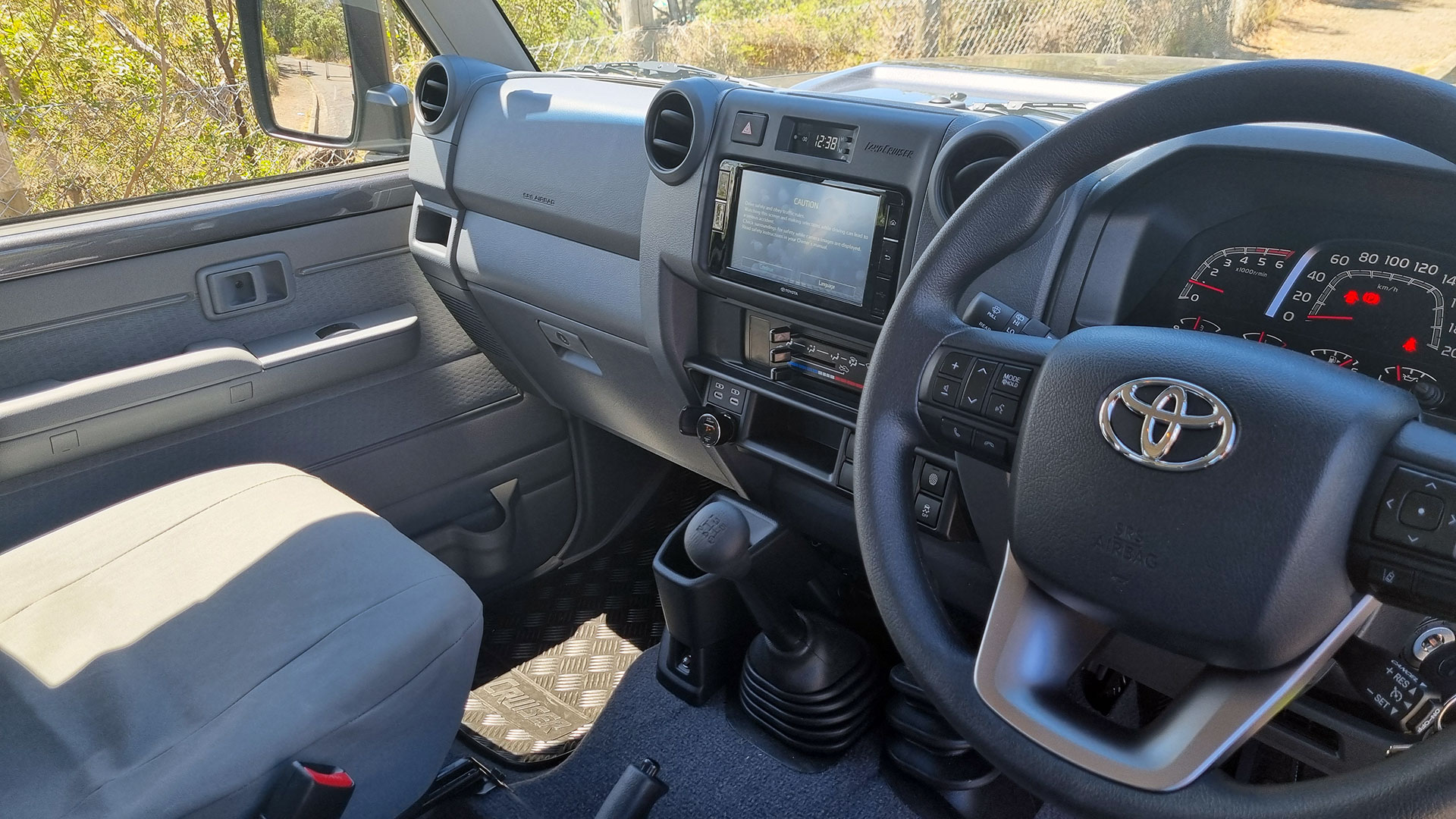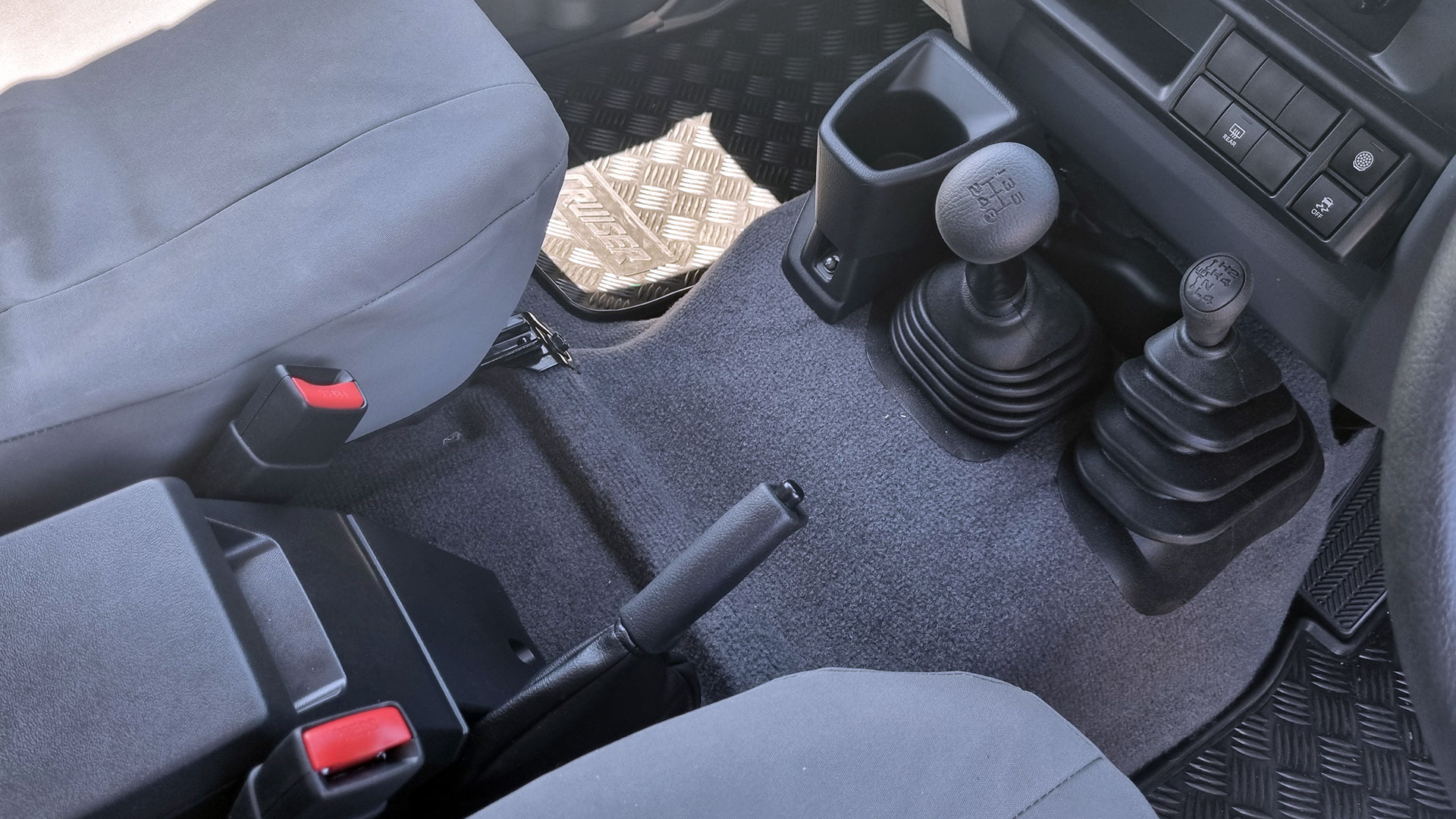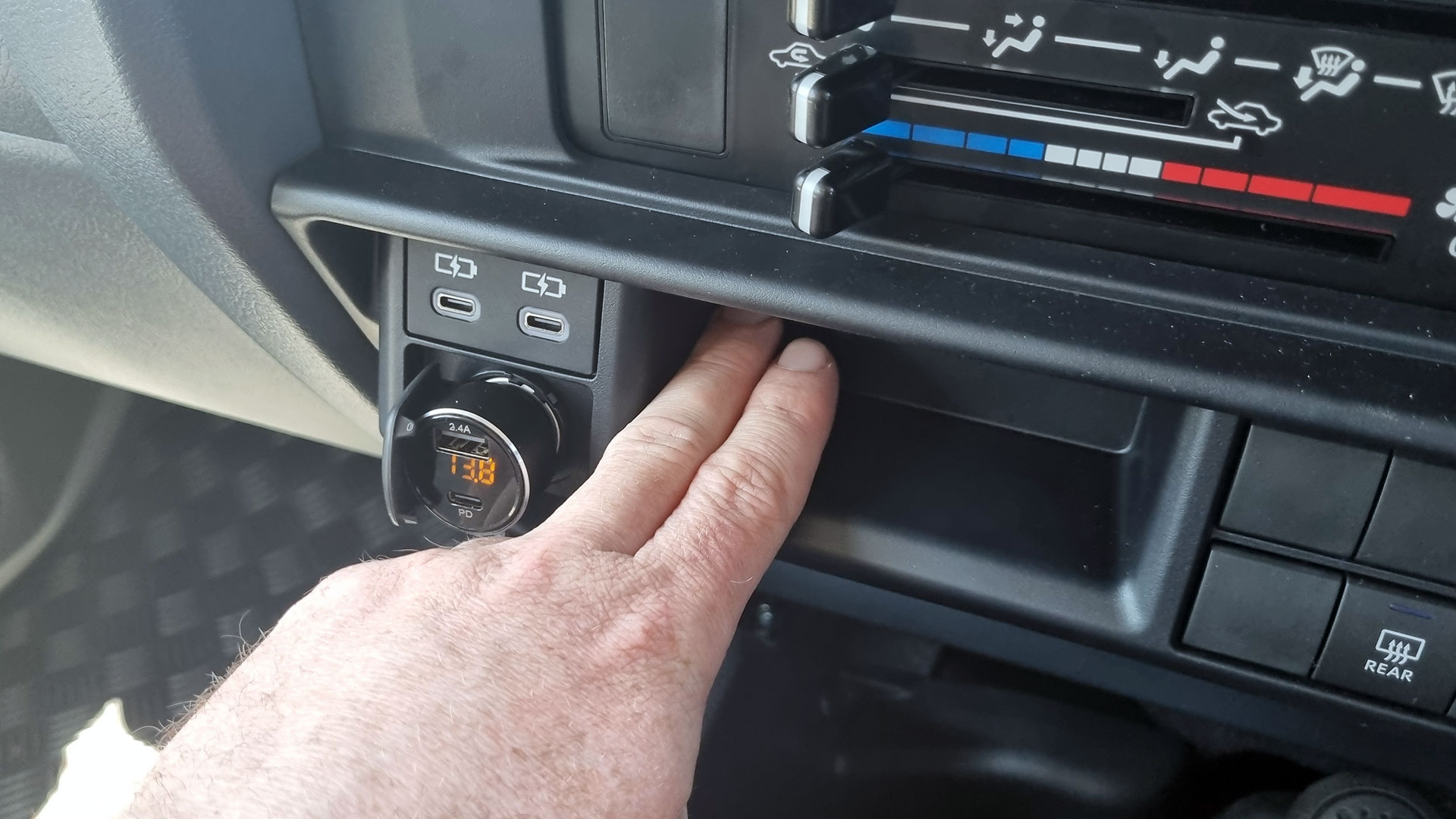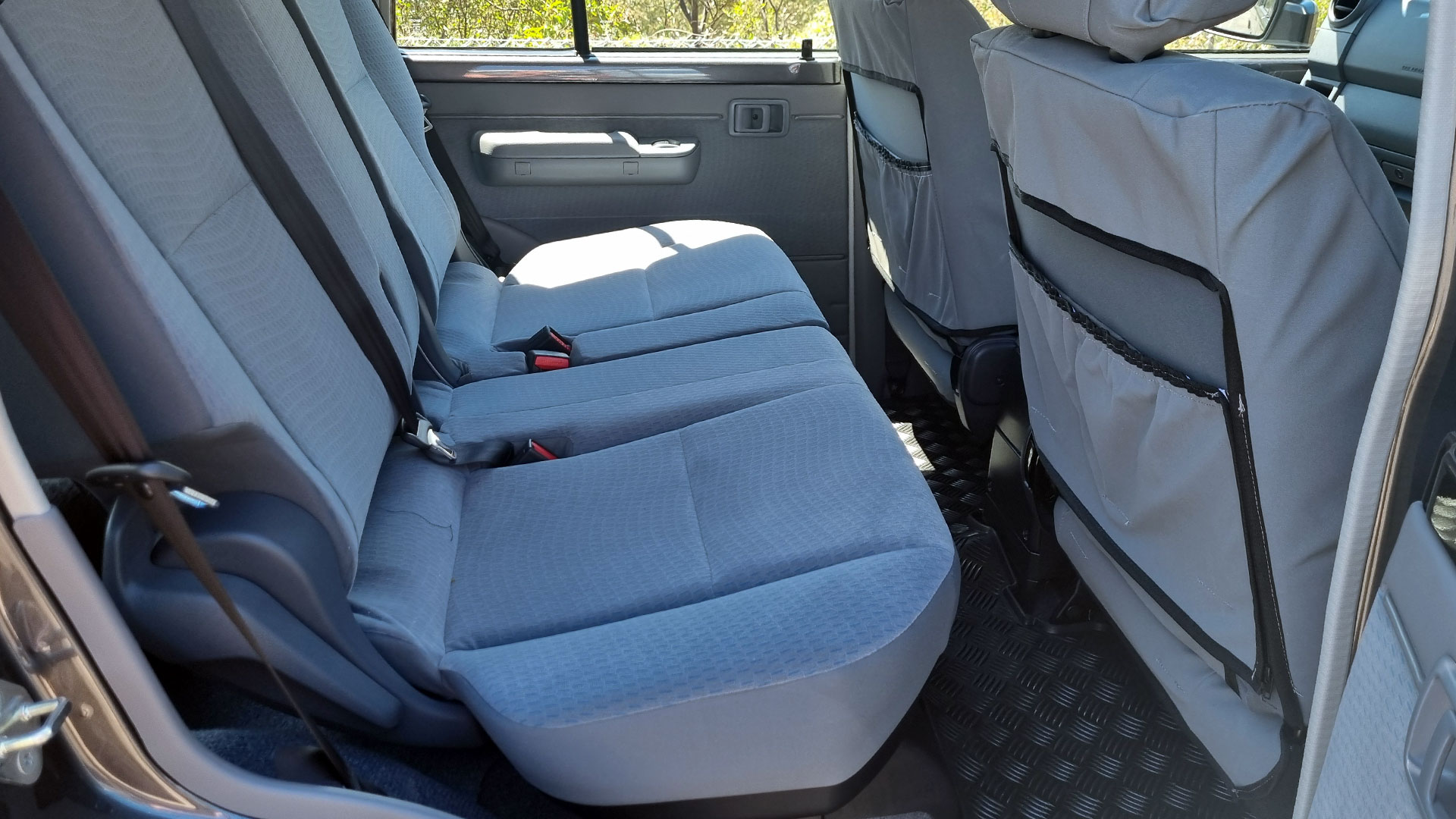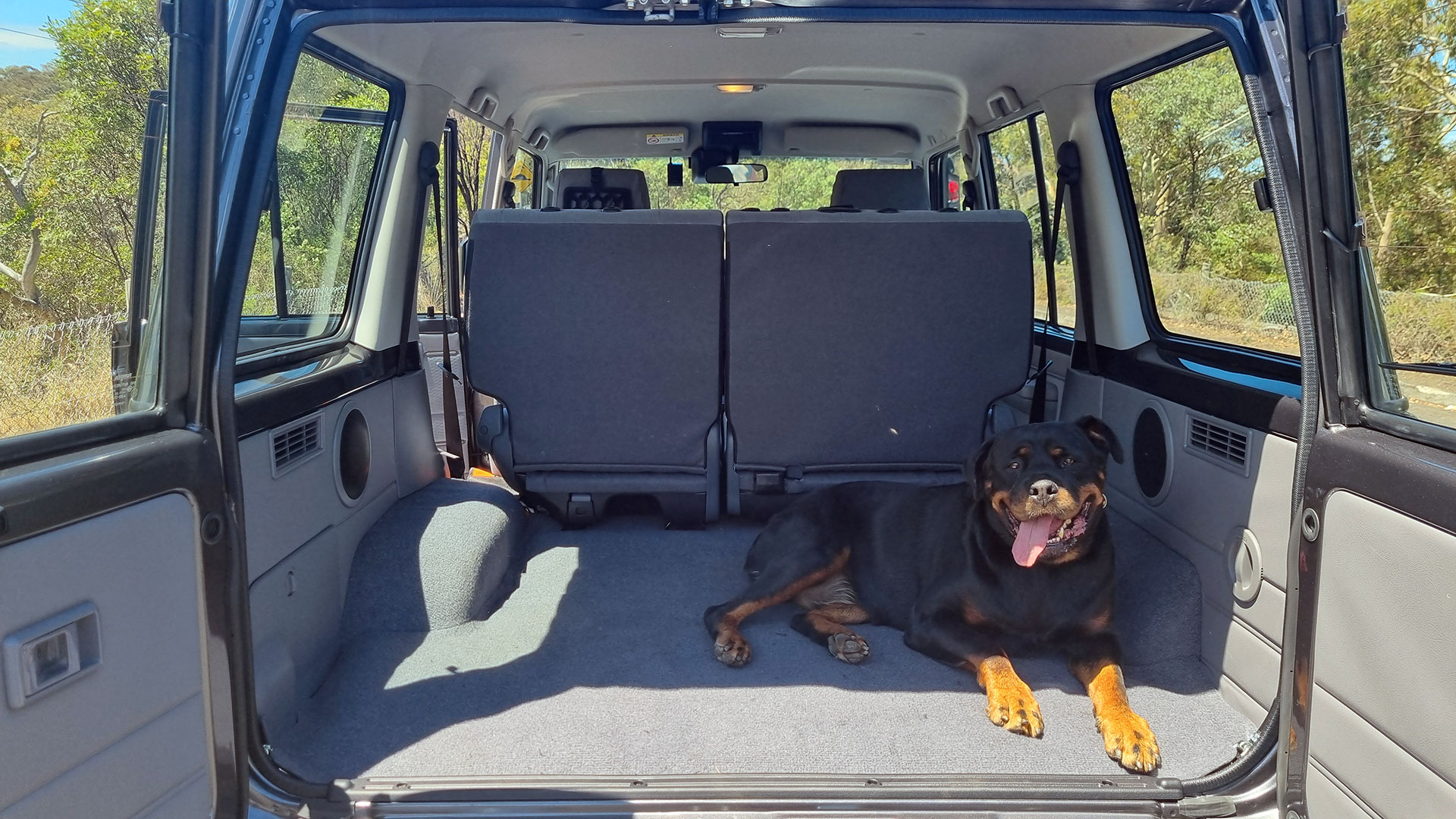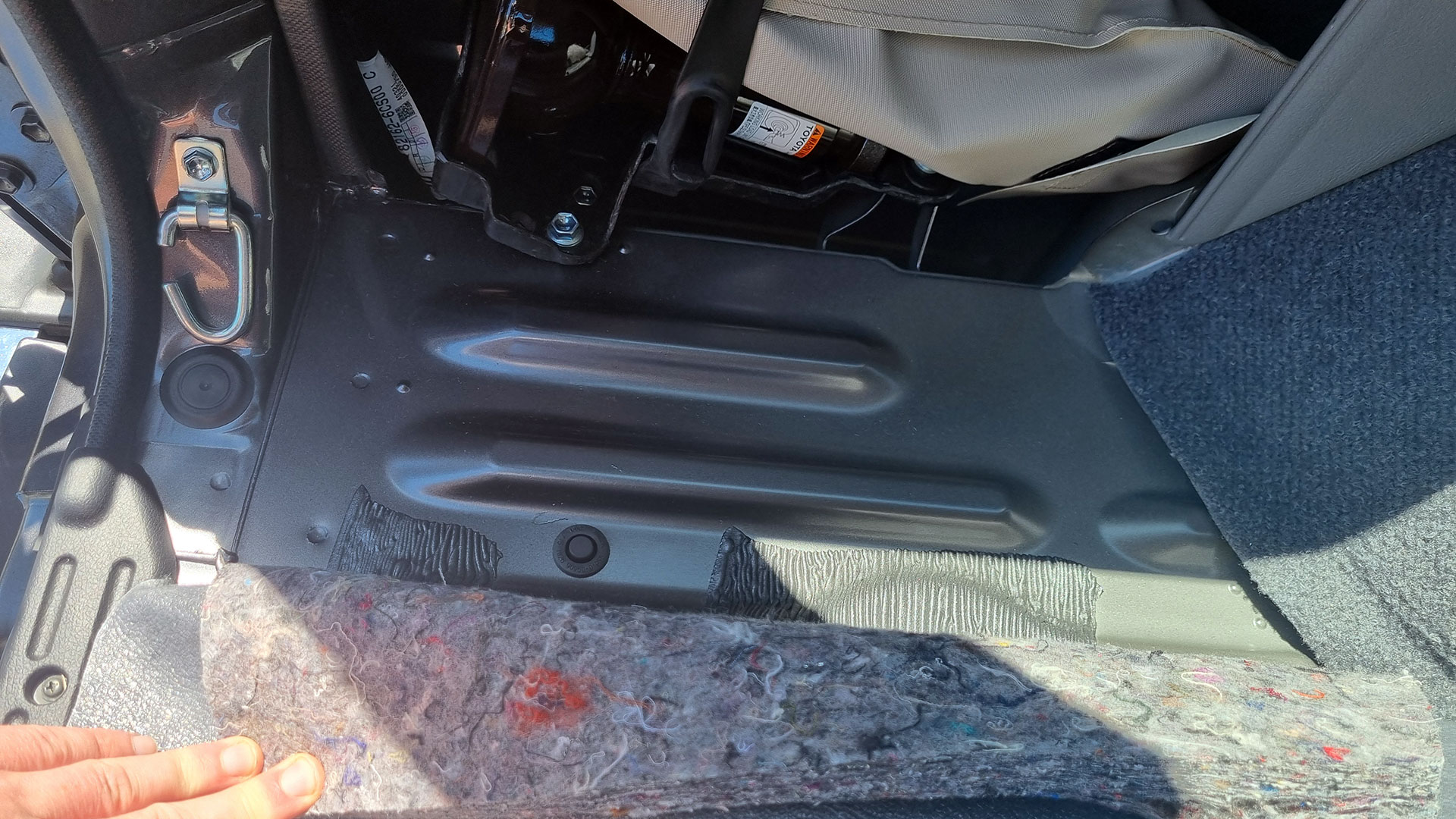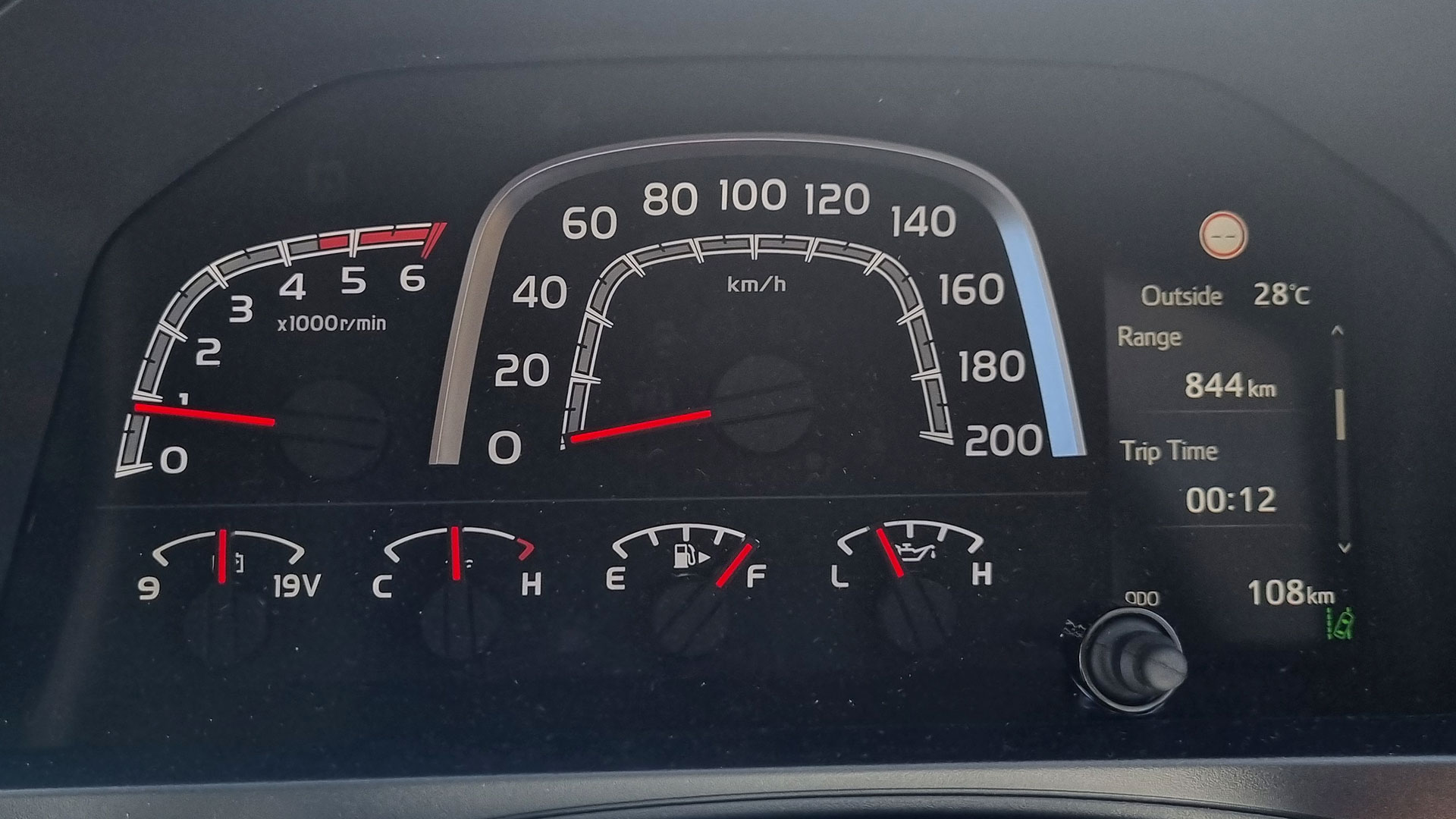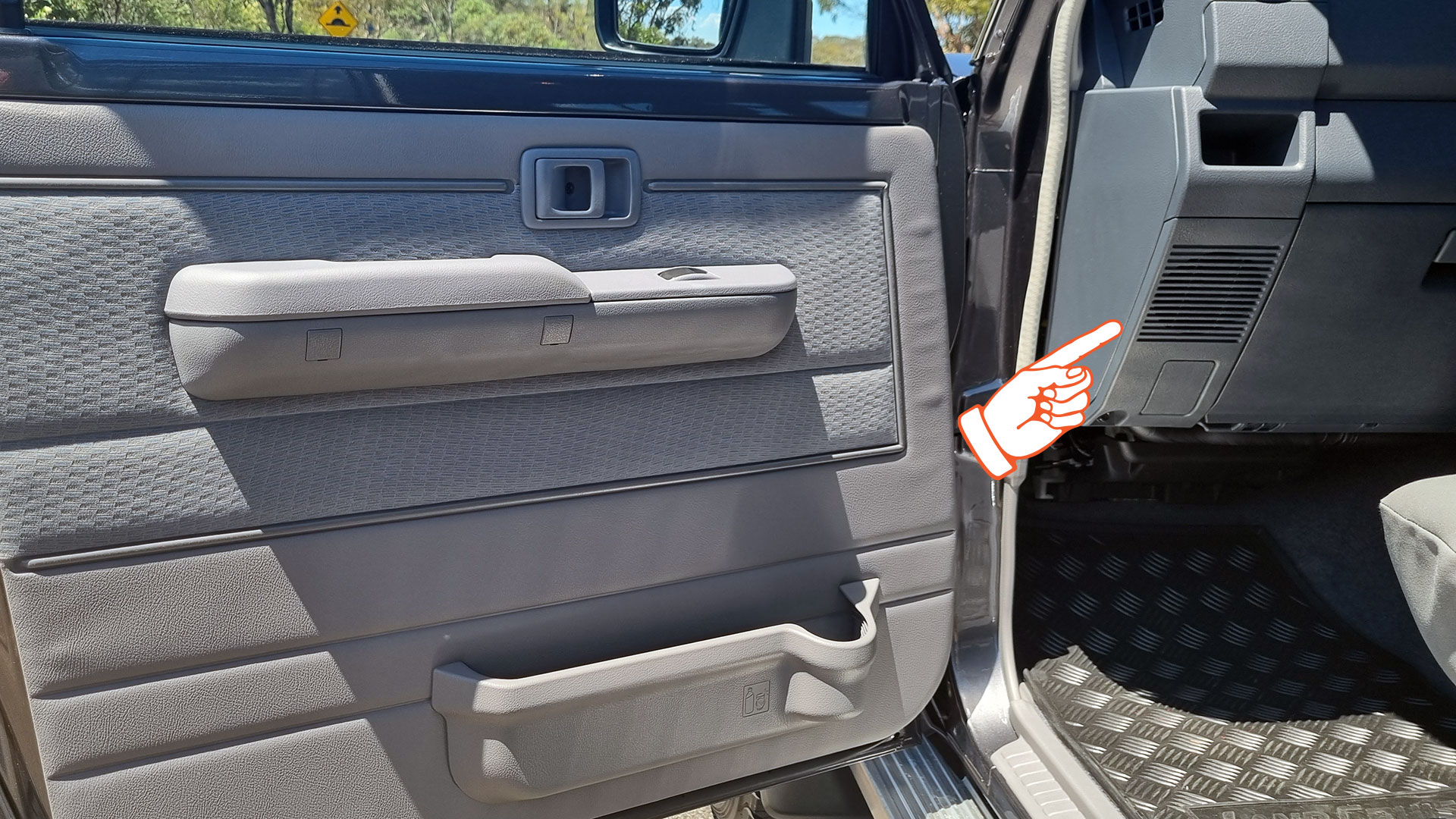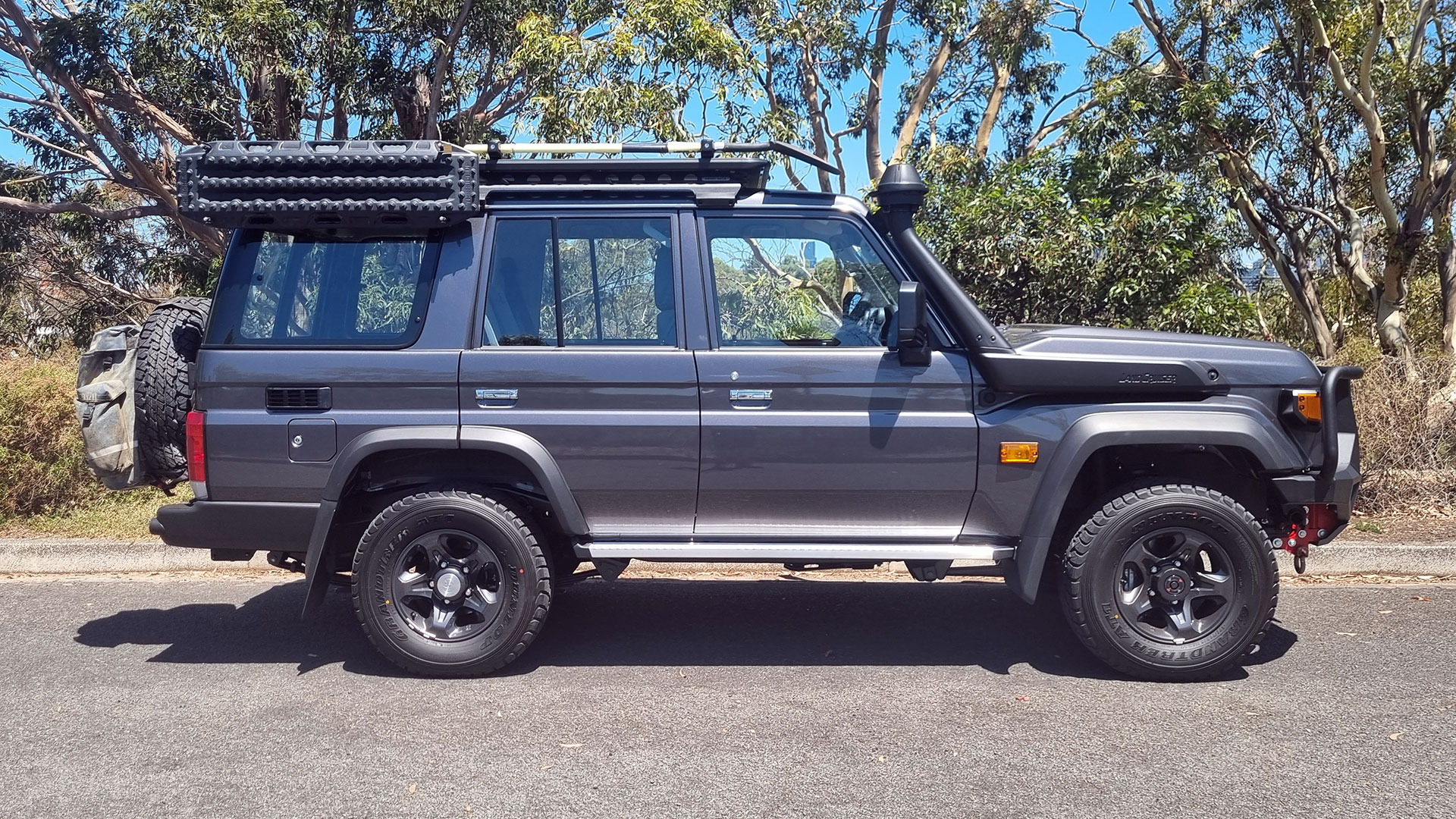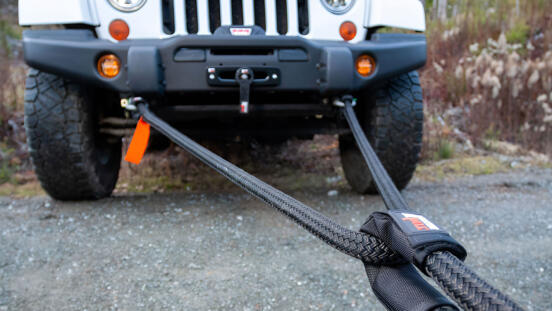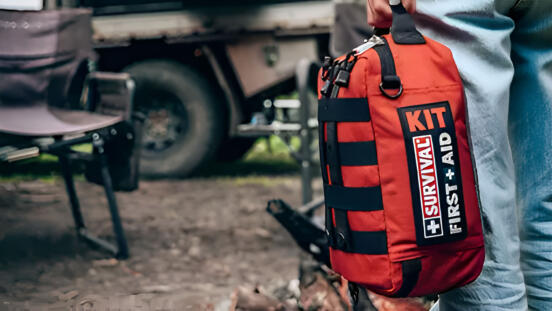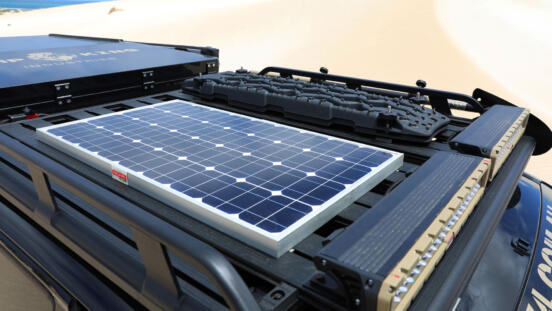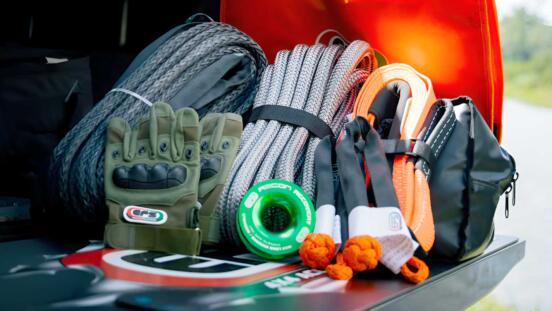After much waiting, my new 2024 LC76 GXL has finally arrived from Toyota. 🎉
The latest release of Toyota's iconic 70 series has been the subject of much debate in the 4x4 community, both in terms of positive additions and improvements, as well as long-running complaints that have yet again gone unresolved in this latest update.
Over the next few weeks, my LC76 wagon will be built into a long-range tourer, so before aftermarket mods and addons take over, here is a review of the core build, feel, and features of the stock vehicle that will provide the platform for each driver. (The bullbar, tow bar, and roof rack are aftermarket, but otherwise, the vehicle is currently stock.)
Note: Not a paid promotion/sponsorship.
Engine (the new 2.8L)
We can't discuss the new 70 series without starting with the new 2.8L 4-cylinder diesel engine, replacing Toyota's long-lived and loved 4.5L V8.
I'm going to skip the comparison and pros and cons of old vs new and cut straight to the chase with something that will make a lot of drivers unhappy, but it is what it is. The inescapable fact is the V8 engine is dead.
As of September 2024, Toyota has discontinued the 4.5L V8 as it can't meet the increasingly strict emissions regulations in Europe, the US, and Australia, and they have no plans to engineer a new V8 that can. If you want a new 70 series with a V8 in 2025 and onwards, you can't have one. Period. So let's focus on the engine we do have, as it's actually very good.
For reference, the top-line power figures of the two engines are as follows:
1VD-FTV 4.5L V8 (old)
151kW @ 3,400rpm / 430Nm of torque @ 1200-3200rpm
1GD-FTV 2.8L 4-cylinder (new)
150kW @ 3,400 rpm / 500Nm 1,600-2,800rpm
Peak power is the same in both engines, while peak torque in the 2.8L comes on a little higher in the rev range compared to the V8, as you'd expect from an engine with half the cylinders. That said, you hit 1,600rpm in a heartbeat with the manuals' noticeably short first gear, and there is no waiting for power while the revs build. The new 4-cylinder also provides 70Nm more torque than the original, improving highway towing of heavy loads; great if you're touring with a caravan.
The clutch is also lighter than you might expect, and not tiring to use over longer metropolitan drives where you're frequently changing gears during extended driving.
I think the criticism many V8 fans heap on the 4-cylinder as small and "not a Landcruiser engine" etc. is completely unjustified. The original V8 engine is over 17 years old, and as with all things technological, engines have come miles since then. It should come as no surprise that a modern engine 2/3 the size can outperform the old workhorse in many ways.
The 1GD-FTV is powerful, smooth, and responsive, and personally, I wouldn't have gone for the old V8 even if I could have. All things considered, the more modern 1GD-FTV is objectively just a better engine.
The new 2.8L does come with an Exhaust Gas Recirculation system (EGR) and Diesel Particulate Filter, which diesel owners love to hate (not completely without cause), but for the same reason the V8 has been discontinued, these emission control devices are here to stay. At the end of the day, unless you're willing to illegally modify your vehicle, defecting it, and voiding your insurance in the process, there's no point complaining about them.
For a tourer, I have no reservations about having a DPF on the vehicle. Most of my driving is 2+ hours on the freeway before heading off-road to camp; more than enough time operating in the right conditions for the DPF to regenerate itself.
If you're just bopping around town in 15-20 minute stints you may well be doing excess cleaning burns, and potentially run into trouble, but if that's what you're using your vehicle for the majority of the time, a 70 series is probably the wrong choice for you regardless.
Engine bay
Unfortunately, one thing that has been sacrificed as part of installing the new engine is space in the engine bay. The V8 had enough free space that a BCDC charger and auxiliary battery could be installed under-bonnet, requiring you to run just a power cable from the engine bay to your wagon interior or ute canopy, but this the battery part of this is looking all but impossible with the new 4-cylinder setup.
Though the engine itself is smaller, the previous free space on the right side of the bay where a second battery would have gone is now completely occupied by various fluid and fuel lines, a reservoir, fuel pump, wiring looms, etc.
On the left of the bay, there is an area with enough space for a battery, but not directly against the body or above the wheel arch to provide a solid base for mounting. These areas too are occupied by other components of the engine, and the actual free space sits as a bit of a floating dead zone beside the engine, with nowhere to mount anything.
This left side space allows for mounting raised diff breathers and a fuel pre-filter, which aftermarket brands are already offering, but I suspect that's going to be it for this space. You might fit an under-bonnet air compressor in here somewhere, but nowhere immediately jumps out as an easy mounting location.
An aftermarket brand may come up with a very small lithium battery under-bonnet install kit, but my suspicion is auxiliary batteries will need to live in the back of these vehicles from now on, consuming precious space. Not the end of the world if you were planning on using a LiFePO4 battery setup and wanted to avoid subjecting it to the heat in the engine bay anyway, but you can't argue with the space convenience of an under-bonnet install. It's a shame this flexibility is now gone.
Exterior style and features
The front end - Style is obviously subjective, but personally, I really like the 70 series facelift. Without the top-mount intercooler of the V8, the bonnet scoop has been removed, providing a flatter, more uniform bonnet shape. It's also significantly less angled than the earlier 70 series, giving it a more square front end, which I think looks great.
The updated modern LED headlights provide improved lighting without looking out of place on the classic body style, and the chunky square indicators are right at home.
The "snorkel" is a two-piece design, annoyingly, with the join at the elbow. I can only imagine this is done for the ease of shipping two detachable straight parts, rather than the single large 'boomerang' shape of a one-piece snorkel, but having a potential water ingress point two feet below the snorkel head is just dumb.
I know, the join in the snorkel is still well above the rated wading depth of the vehicle, and 99% of off-roaders never do a bonnet deep water crossing, but, if you're going to fit a vehicle with a "snorkel", do it properly. If this is the justification for using the two-piece design, the same result could have been achieved with an under-bonnet intake and spared drivers the wind noise and clutter on the A-pillar.
Toyota, you're asking $80,000+ AUD ($50,000+ USD) for the new LC76 GXL, if you're going to fit a snorkel spend the extra $20 for a one-piece unit and add it to the price. Don't cheap out to save a few bucks on shipping costs and call it a "raised air intake" to justify it, while making it not fit for purpose in the process.
Power mirrors come standard on the GXL, which is a welcome addition. The manually adjusted mirrors from earlier models are a pain, but thankfully this problem is now solved on the GXL (but not the WorkMate or GX).
Closing the doors on the LC76 is a bit odd. Despite being basically the same size and shape, the front doors require twice as much oomph to close properly than the rear. The rear doors close effortlessly, while I regularly find myself having the front door half latch from not being closed hard enough, and having to do it again.
The same goes for the boots barn doors. The rear wheel carrier door snaps shut every time, while the smaller left-hand door needs extra elbow grease to properly close.
The reversing camera of GXL is mounted underneath the rear door handle (left side), allowing a spare wheel bag to be fitted (right side) from the get-go without obstructing anything. On other Toyota models like the Prado 150, the camera is located in the center of the spare wheel carrier and requires relocation if you want to fit a wheel bag without blocking it, so points to Toyota for not repeating this issue in the LC76 GXL.
Interior
The interior of the GXL (particularly the manual) is a mix of hits and misses, and a few laughable inclusions.
The good
As far as the dash and door trim go, the interior is as simple as it comes. It's plastic, a little cloth, all the way around, but the quality, fit, and finish of everything is solid. You won't find an interior that's easier to clean, everything fits together tightly and feels strong. While there is a lot of plastic, nothing feels cheap or flimsy. All the panels and joins are firm, and all the buttons and levers have clean, crisp clicks and no excess wobble.
That's really all there is to say about the trim. There is zero luxury to it, it's simple and made to last, and that's it.
The seats are typical cloth, with nothing noteworthy to speak of either way. In any case, I've gone with the genuine canvas covers on mine as they're treated pretty rough through camping trips. The seats have no electric adjustment, no inbuilt heaters, etc. Just a place for your backside.
I'm 5'10", and at my height the seats are comfortable enough with a little leg room to space in the front, and plenty of headroom. The driving position is high, giving great visibility of the road all around.
The so-so
A small gripe is the lack of door armrests. The actual armrests on the doors are far too low to support your arms. These really function as door handles only, leaving you to rest your arm on the window sill.
From the glass, the inside of the door immediately tapers down providing only about an inch of room to rest your elbow on. With the window up, your elbow is hanging on by a thread, with the window down, allowing you to put your elbow out the window a little for more support, you're resting your arm on the rubber seals.
If the door trim was two inches higher, and an inch wider, the problem would be solved without encroaching on anything else in the vehicle.
The glove box is also pretty modest in size. The footprint is about the side of your owner's manual, with a bit of room on top for bits and pieces. There's also a sizeable void behind the glovebox, which is great for things like an in-dash UHF install, and convenience in accessing wiring, etc. but I feel like more of this space could have been given over for the permanent benefit of the glove box without impacting inside access much.
The bad
Where the new 70 does fall hugely short, is the center console and dash storage. The center console itself is very small, and yet there is a gaping void between the console and shifters that could have provided plenty of additional storage space for phones, drink holders, and general small item storage.
The automatic transmission version provides some of this with a larger console stretching to the dashboard, but for some reason in the manual model, Toyota has chosen to discard it completely leaving a cubic foot of nothing here instead. Like the snorkel and missing armrests, this is another case where $20 worth of plastic would have made it much more practical.
Similarly, on the center dash, there is a single storage recess that is all of about 2 inches deep. I honestly have no idea what you could put here. It's not even a third of the size you'd need to store a mobile phone. You couldn't even store a pack of gum here, really. It's so shallow that anything placed there that isn't glued in is going to fall out on the first bump or corner.
What are you possibly going to store here?
I'd almost rather it not be there than add it for the same of calling it "storage" when it's basically unusable. The passenger-side dash storage pocket is a little deeper but not enough to really be functional either.
The ugly
The leg room in the back of the LC76 is almost non-existent. My driver seat isn't even pushed back as far as it will go, and there isn't enough room for an adult to put their feet in without twisting to get through the gap and then straighten up. Once in, you have to sit like a rigid toy solider to fit, with virtually no room to move for comfort.
A pair of small children could sit in the back comfortable enough, but this is definitely not a vehicle for long journeys with 4 adults; anyone sitting in the back for hours is going to feel like a tinned sardine.
The boot
Unlike the rear seats, the boot has plenty of space (though for some reason Toyota doesn't provide the volume in its specs sheet). It is worth noting though that while large, the LC76 boot is a little shorter than you might expect, compared to some of the other LandCruiser options, but it has a decent width, and it's tall.
If you're fitting out the rear with drawers and whatever else you might install as part of a touring setup, you're going to be looking at a vertically focused build. Aftermarket roof shelving has a place here to make use of the LC76's height.
Note: Rottweiler not included as standard.
One gripe I do have with the boot is that the carpet is laid directly on the floor pan, with the various supporting ridges prominently felt through the carpet, making the floor bumpy and uneven.
I know it's a work vehicle, but it's hardly asking a lot to have a flat floor in the boot. Arguably it's more important in the LC76 than your average 4x4 as anyone looking to buy this vehicle is almost certainly looking to turn it into an off-roader or tourer, and the boot install will play an important part of that.
This is another improvement that could have been easily made with a sheet of injection molded plastic, and a few bolts and captive nuts.
Instrumentation and entertainment.
An LCD touch display is another welcome addition, replacing the old stock buttons and dials style head-unit. Like the rest of the interior, the functionality is basic, just radio and Bluetooth audio, but does support Android Auto and Apple CarPlay to utilize your phone apps for GPS, Spotify, etc.
Annoyingly, this still requires your phone to be physically connected via USB to the unit, and as already discussed, the center console and dash storage provide nowhere to place your phone. On my first few drives, this left me with my phone on the passenger seat, and a USB cable dangling around the shifter.
This can be solved with a windscreen phone holder, or aftermarket Auto Android WiFi adapter (and I assume Apple too), but having wireless support by default is another small feature that would make things so much more convenient right off the mark.
The instrument cluster is simple and clear. RPM and speed make up the primary dials, with small simple readouts for battery voltage, engine and oil temperatures, and fuel level.
The end of one side has an information panel with a few basic options like range and trip time, speed limits, lane monitoring, etc., which you can set to your preference.
The speakers are extremely ordinary. I'm not a demanding audiophile by any means, the factory speakers in my Prado 150 served me fine for a decade, but when firing up some music for the first time it's immediately obvious the LC76 speakers are very lacking.
If I have my dates right, these are the same speakers Toyota has been putting in other vehicles going back as far as 1988. 36 years! Given Toyota has just updated the head unit to something more modern, now was the time to also upgrade the speakers, but they didn't
In addition to the speakers' low quality, the speaker placement hasn't been done well. There are no speakers in any of the doors, for the cabin there is only a pair of very small woofers in the front dash.
I appreciate that in older models without power windows or door controls, not placing speakers in the doors eliminates the need for a wiring loom between the dash and doors. As the GXL comes with power windows and door-mounted controls though, this loom is already there. Better speakers could have been added to the GXL's front doors without compromising the simplicity and reliability goals of the 70 series.
A pair of these is the entirety of the front stereo.
Where the GXL does have larger, better speakers is in the boot... where there are no passengers, as it's not available in a 7-seater model. This won't be a problem for everyone, but from stock, for me to be listening to a podcast at conversational volume in the front, means my dog is getting blasted with triple the volume in the boot where she is trying to sleep during journeys. This is solved easily enough by moving the fade of the speakers 100% to the front, effectively turning them off in the rear, but then I lose half the soundstage
Having some modest door-mounted speakers would have improved the sound experience for all occupants, and allowed fragile speakers to be removed from the boot and cargo area. A win-win for both objectives.
Handling
Steering during normal road driving is pleasant enough, though when doing 90-degree turns it is a little heavy. The ratio of the steering rack also means quite a few rotations for sharp turns when getting in and out of parking spaces and maneuvering through carparks, etc. It's not terrible though, and when driving soft corners and sweeping bends, you don't even notice.
The turning circle of the LC76 isn't amazing, it must be said. The LC76 has a 30cm shorter wheelbase than my Prado 150, so it could (in theory) have a tighter turning circle, but with the 70 series particular steering/suspension setup and ranges this isn't the case; navigating a regular car parking space of mine that is doable in a single tight turn in the Prado, is now a three-point-turn in the LC76.
For touring this is no issue, but if you're constantly navigating tight carparks you're arms are going to get a workout. You can also forget about doing a U-turn on a two-lane road in one swoop; this is another now three-point-turn maneuver.
How it handles navigating the tight paths of some of my local forest tracks remains to be seen. More on that separately in the future once the build is finished and it's been put to the test.
Suspension and payload
Front and rear solid axles are one of the major appeals for the 70 series and off-roading. Coil springs in the front make the front half of the vehicle pleasant to drive on the road when navigating the usual bumps, humps, and potholes. If you're already driving a coil-spring 4x4, there won't be anything surprising here for you.
If you're looking at the 70 series and coming from a less "heavy-duty" 4x4, the rear leaf-spring suspension is definitely worth some proper consideration.
Leaf springs excel at supporting a range of mid to heavy loads, but there is a trade-off for this robustness. Unlike coil springs which can freely compress and extend without restriction, the layered structure of leaf springs creates friction in their movement as these layers rub together. This friction means less responsive springs, resulting in a harsher ride, and in the case of the 70 series, this harshness is amplified by the vehicle's payload setup.
For comparison, Toyota's other recent 4x4's like the Prado 150, LC200, LC300, and Hilux, all have a payload of between 610kg - 785kg (depending on the model and trim), whereas the LC76 has a payload of 1,210kg; that's 400kg more than the next vehicle in the list, and nearly double the others. The 70 series is expecting a lot of weight and has the springs to match.
Driving the vehicle unladen, the rear suspension is expectedly harsh. Every pothole or cat's eye you run over is jarring, and driving along a cobblestone street or corrugated road will rattle your teeth. If you're not going to constantly have at least a few hundred kilos on/in the rear of the LC76, it would make for a rough daily driver.
The rear wheel track, almost unbelievably, has still not been fixed on this release of the 70 series.
If you're not familiar with this, before the mid-2000's the front and rear wheel track of the 70 series was the same. When the V8 engine was introduced in 2007, this necessitated widening the front axle. As a result, the rear wheel track is now narrower than the front.
On the road, this makes no difference, but when off-roading, particularly in the sand, this results in the front wheels laying wider spaced tracks, which the narrower spaced rear wheels then struggle to find a place in, causing the back to constantly pop in and out of the tracks in a mini fishtail motion.
This can be fixed with aftermarket replacements, but these are several thousand dollars. It's a big ticket to resolve an off-road-specific issue that isn't present in any other modern 4x4.
On one hand, I can understand Toyota's reasons for keeping this; there is a massive fleet of existing 70 series out there, and by keeping the same narrower rear dif, they don't need to provide two manufacturing and spare parts lines. By keeping it narrow, one size still fits all.
But how long can this go on? How many decades do you propagate this problem for? At some point, Toyota just needs to bite the bullet and fix this issue for the benefit of all future 70 series, rather than repeating the problems of the past. Unfortunately for current buyers, including myself, this release is not the one to do that.
Front and rear lockers are also standard on the GXL, and of course a low-range gearbox (though these are obviously irrelevant for on-road driving).
Should you get one?
I think it's important to understand what the 70 series is when considering buying one.
Other current modern four-wheel-drives like the Toyota Prado and LandCruiser 300, Nissan Patrol, Izuzu MU-X, etc., while all very capable off-road, are compromises of ability, comfort, and modern technologies/luxuries.
Toyota's 70 series is not.
The hallmarks of the 70 series are a high stock payload and GVM, off-road ability, and simple mechanical options deliberately chosen for strength and reliability while eliminating unnecessary complexity and potential failure points.
The 70 series is a near bulletproof workhorse and off-roader, and can comfortably carry a literal tonne while doing so, but it sacrifices a significant amount of comfort, modern technology, and features to accomplish this, and does so unapologetically.
If considering a 70 series I'd recommend buyers ask themselves the following questions:
- Do you need the high payload and GVM?
- If you do, might a GVM upgrade on a different vehicle be a better option for you?
- Do your off-road activities really require front and rear lockers?
- Do they benefit from front and rear solid axles?
- Do you do enough remote travel, and is it far enough, that the 70 series reliability is worth the compromise in comfort?
For my purposes, the LC76 is the right fit, but it has to be said if you're attracted to the 70 series for any reason other than its mechanical particulars and don't tick most of the list above, it's probably not the ideal vehicle for you. Some of the alternatives mentioned earlier will likely meet all your payload and off-roading needs while also providing additional comfort and features.
Don't get me wrong, the 70 series is a hell of a vehicle. It's arguably the last of the "old school" four-wheel-drives that we'll ever get. I love mine, but it isn't going to be for everyone.
Coming up...
At the time of writing, my LC76 is mostly stock. Over the next few weeks, I will be installing a rear drawer and storage system, 12v LiFePO4 BCDC charger and solar system, winch, and other accessories to complete the touring build. Stay tuned for more.
Read section again:
Engine
Engine bay
Exterior style and features
Interior
Boot
Instrumentation and entertainment
Handling
Suspension and payload
Should you get one?

